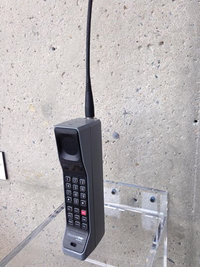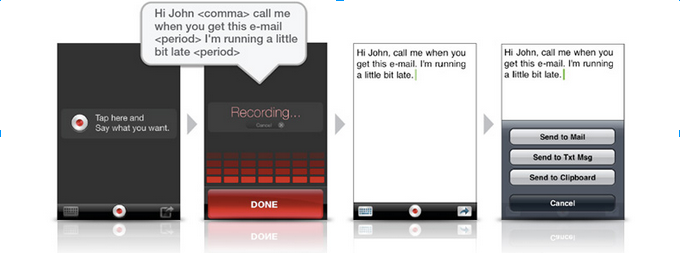Trefor.net welcomes VoIP Week guest contributor Mehdi Nezarati, President of EMEA, Esna Technologies Inc.
Communications, Then and Now
 It was not that long ago that phone companies — and their charges for long distance calls — could not be avoided. We don’t often think about it now, but calling overseas used to be expensive and somewhat complicated. It would require a certain calling plan and a special way of dialing the traditional telephone. Then along came the ability to make calls over the Internet, and now we don’t think twice about having long conversations with friends traveling abroad or scheduling conference calls with business associates in other countries. Apps such as Skype, Google Voice and Tango have made VoIP part of how we live and work, and whether the call we are on is connected via VoIP or not is no longer relevant. And the fact that we know hav the ability to use these apps on any device — a phone, tablet, or computer — means we can talk to anyone, anywhere, at any time. Thank you, VoIP, for this seamless and standard method of communication now at our fingertips.
It was not that long ago that phone companies — and their charges for long distance calls — could not be avoided. We don’t often think about it now, but calling overseas used to be expensive and somewhat complicated. It would require a certain calling plan and a special way of dialing the traditional telephone. Then along came the ability to make calls over the Internet, and now we don’t think twice about having long conversations with friends traveling abroad or scheduling conference calls with business associates in other countries. Apps such as Skype, Google Voice and Tango have made VoIP part of how we live and work, and whether the call we are on is connected via VoIP or not is no longer relevant. And the fact that we know hav the ability to use these apps on any device — a phone, tablet, or computer — means we can talk to anyone, anywhere, at any time. Thank you, VoIP, for this seamless and standard method of communication now at our fingertips.
The same thing is happening in the field of Unified Communications (UC). What is Unified Communications, you ask? Like many people asked about VoIP in the early 2000’s. I’ll save time and let Wiki answer that. What’s important to know is that UC saves time, improves communication and collaboration, and is becoming seamless in our lives. What was once possible only by large organizations deploying a suite of tools is now quickly becoming a part of our everyday lives. Consider these likely unnoticed aspects of UC we use every day:
- Visual voicemail functionality built into our smartphones
- Speech recognition capability that allows us to dictate emails and texts for communications on the go

- Cameras as standard issue equipment on our smartphones, tablets and computers that facilitate face-to-face communications
As VoIP replaced traditional telephony, nowadays UC is beginning to disappear into our devices and workflows, making communication faster and easier and thus improving our lives. Video calling is a natural means for communicating with one another, and talking to our phones to complete tasks is all now part of a day’s work. At UC’s maturity, where VoIP is now, we can expect to experience more benefits in the devices and cloud apps we use in everyday workflows, as both are becoming the standards for the way we work and get things done.
Tref: As a business, trefor.net does not have a landline. We primarily use Google Hangouts, and occasionally (rarely) Skype. Of course, we also communicate via mobile, though often the mobile handset is the medium for Hanging out on Google. Not to say that this would work for every business, though, as there is a massive sunk cost in Telephony equipment out there, not to mention the investment in marketing collateral that includes inbound numbers. Businesses, however, are gradually adopting Google Apps, in great part due to the powerful collaboration capabilities it makes available. For example, looking again at our own situation, last week I met with a journalism graduate who plans to put together material on the use of tech by students. I started things by creating a Google Doc in which we could jointly work, which I then shared via her Hotmail address.
Google builds safety nets into the system in the form of policies that keep staff from using Google Docs as a means for leaking company data. The point, though, is that the Google App setup is already a Unified Communication environment in every sense of the term. It is a short step from where we are now to businesses integrating Google’s functionality with their own PBX and with their existing inbound telephone numbers.
Elsewhere, the Davies family communicates mostly through Google Hangouts and Facebook, with the occasional moment of dad calling back an offspring on their mobile when they don’t want to use up their valuable credit. The Kids are mostly always on Facebook, too, where IM often initiates a move to a video Google Hangout. We have even extended this to the setting up of whole family “video conferences” (although the term is rapidly being replaced with video Hangout) with five participating laptops, three of which are in different rooms in the house, with mum flipping between these rooms. I suspect the quality of the group Hangout is driven by the uplink bandwidth available to one of the remote family members, but it is no doubt the way ahead.
IMG credits: voicemail – http://www.intomobile.com/2011/02/13/youmail-visual-voicemail-ios/ dictation – http://singularityhub.com/2009/12/14/dragon-dictation-voice-recognition-comes-to-the-iphone-for-free-video/ video – http://www.cultofmac.com/276995/snapchat-adds-instant-messaging-video-calls/
VoIP Week Posts:
